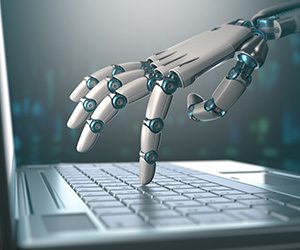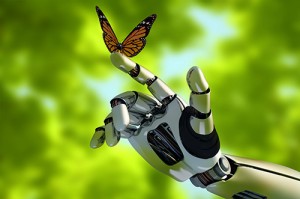 Medical technology is allowing us to live longer but increased longevity also means more of us will live alone. Our average life expectancy is rising but we will not all live to be 100 or older. For seniors living alone, there are now solutions to help with basic living, scheduling, and social tasks that can help keep them independent.
Medical technology is allowing us to live longer but increased longevity also means more of us will live alone. Our average life expectancy is rising but we will not all live to be 100 or older. For seniors living alone, there are now solutions to help with basic living, scheduling, and social tasks that can help keep them independent.
Robot Companions
Isolation is a problem for many people living alone. They may be unable to get out to interact with other people or they simply may have no desire to do so. This is where robots could help. Intuition Robotics has recently introduced ElliQ, an artificial intelligence (AI) robot that interacts with seniors. While this robot does not have traditional arms and legs it is designed to keep seniors in touch with others and help them track appointments and even suggest activities. Most importantly, it works through a natural speech interface. It communicates through a combination of lights and sounds and voice. Because it incorporates machine learning, or AI, it learns habits and preferences and helps set and remember daily schedules and routines.
ElliQ is designed to be a fixed robot but other robots, such as Softbank’s Pepper, are mobile. At this time it can only carry the built-in tablet which acts as its interface, but it can follow or get to people who are less mobile. This is a relatively new device that is starting to be used in retail shops to interact with customers.
Robokind has developed Milo, which is a combination of ElliQ and Pepper but with more humanlike limbs and facial expressions. It accepts voice input and interacts with people through natural voice output and body language. Milo is being touted for seniors and those living alone and for people on the autism spectrum who can benefit from his personal interaction.
Possibilities
I can think of other benefits of these robots. They could aid and encourage music practice. For example, they could be programmed to be a metronome while I practice an instrument. Better yet, they could provide another part of the music that I am playing. For example, if I play the guitar, perhaps the robot could play bass violin or another part to accompany me. Another use could be practicing or learning a foreign language. With the right programming, the robot could provide many components of good language learning courses—lessons, immersion, repetitive practice, immediate feedback and correction.
All of these things keep the mind active and hopefully slow the inevitable aging process. Repetitive tasks such as music or language lessons can increase brain activity and general life satisfaction. With the aid of technology, those extra years can be rich and rewarding.
Thoughts
Can you think of other applications that would help seniors, particularly those living alone? Will robot apps become a new industry? Let me know your thoughts.
Kelly Brown is an IT professional and assistant professor of practice for the UO Applied Information Management Master’s Degree Program. He writes about IT and business topics that keep him up at night.





